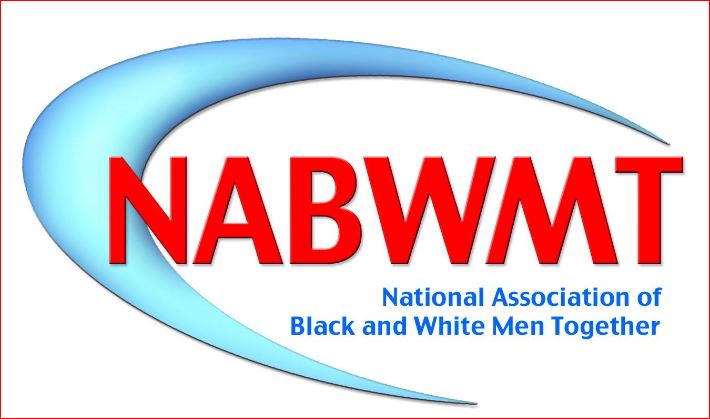
We are basking in the sun of victory in the 2020 General Election, but there is still more to be done as a recent op-ed suggests.
Stacey Abrams and Lauren Groh-Wargo met and became political partners a decade ago, uniting in a bid to stave off Democratic obsolescence and rebuild a party that would increase the clout of regular, struggling Georgians. Our mission was clear: organize people, help realize gains in their lives, win local races to build statewide competitiveness and hold politicians accountable.
In Georgia, many allies had retreated and Democrats lost at the polls and in the Statehouse.
There was also a 2010 census undercount of people of color, a looming Republican gerrymander of legislative maps and Barack Obama confronting a holdover crisis from the previous Republican administration.The dynamic of a potentially inaccurate census and imminent partisan redistricting is the same story facing Democrats in 2021 as it was in 2011.
Georgians devised a 10-year plan to transform Georgia into a battleground state. Years of planning, testing, innovating, sustained investment and organizing yielded the record-breaking results in 2020 and 2021. The lessons they learned can help other states, particularly those in the Sun Belt, where demographic change will precede electoral opportunity.
The task is hard, the progress can feel slow, and winning sometimes means losing better. In 2012, for example, they prevented the Republicans from gaining a supermajority in the Georgia House of Representatives, which would have allowed them to pass virtually any bill they wanted.
The steps toward victory are straightforward: understand your weaknesses, organize with your allies, shore up your political infrastructure and focus on the long game.
Understand why you’re losing.
Understand that a century of Democratic Party dominance in Georgia had been erased. The Gingrich revolution in the early 1990s, allowed Georgia to turn sharply to the right, and in 2012 the State Senate fell to a Republican supermajority. Clearly, Democrats had to change tactics.
The Democrats conducted internal discussions, but self-analysis invariably misses obvious problems. In 2011, when Stacey became the Democratic minority leader in the State House after four years as a state representative. Lauren had been based in Ohio, supporting swing-state campaigns across the country and helping to shore up other embattled local leaders across the country. With a shared belief that Georgia was on the brink of change, they joined forces.
They talked to colleagues who were in the trenches, and they read what Republicans said about Democrats. They were ineffective at holding Republicans accountable. Their infrastructure was disorganized, they lacked a clear message, and they were failing to shine a spotlight on Republican hypocrisy.
They understood that promising demographic trends wouldn’t translate to Democratic wins without deep investment and work over time.
Take action.
Red states often lack a coherent political argument for the existence of a Democratic Party. Leaders say, in effect: “we are Democrats and want progress.” But their ambitions don’t meet voters’ realities. Or they define them only in reaction to what Republicans say about them. \
State Democrats need a politics that people can vote for, embedded in what each particular state is facing. It should be grounded in truth and enhanced by national narratives, but not driven by them. All politics are local.
Whether it is creating economic opportunity in one of the five states without a state minimum wage or saving public education where children are losing out to failed reform policies, each state Democratic Party should create a narrative about where it is and where it is headed that voters can believe.
Offer a realistic but aspirational alternative, like community schools and collective bargaining. The House Democratic Caucus under Stacey’s leadership from 2011 through August 2017 focused on three areas: educational opportunity, economic security and shared responsibility.
Never forget that creating a political identity for state Democrats is not a national operation. Each state is starting from a different place, and for the message to have meaning and credibility, it must reflect the reality of where you are today, not just where you aspire to be. Resist the urge to leave your constituents behind.
Organizing is the soul of this work.
Building progressive governing parties requires organizing. Grassroots organizing pulls in individuals who see their interests being served. The most effective organizing for political revolution answers the question, How do they make change?
First, you need a resonant issue to organize around. Then you need a concrete goal to organize toward. Good community organizers are crucial for connecting needs and dreams to resources and policy changes. While organizations are optimal, individuals can and do work independently to great effect.
And sustained engagement with all of the component parts of a Democratic coalition means that while those you disappoint may be angry with a particular action, they won’t abandon the mission. Better still, sometimes they show up to defend their ideological opponent when the other is under attack.
Breathe life into the state party.
State parties have legal standing to coordinate with candidates and committees, and raise various types of funds that are needed to win elections. They need to be functional and transparent at a minimum, and high performing if at all possible.
Stacey’s outreach, fund-raising and training initiatives helped infuse the party with cash and talented operatives. She spent time coordinating and supporting the necessary infrastructure, down to the nitty-gritty of editing news releases and taking late-night calls to problem-solve or just to listen to state party staff members and leaders talk through their challenges.
Lauren officially served as a consultant to our state legislative campaign efforts, but for most of those years, she was essentially a volunteer, as the funds there were minimal. She secured access to voter files, and mentored and coached the legislative caucus staff as it grew from one person to nearly a dozen. She actively engaged local and national consultants who theyre needed to augment our scrappy early work and whose faith in our eventual rise would be essential to it.
By 2018, the state party had become a professionalized and responsive organization ready for the $40 million effort the Abrams for Governor campaign orchestrated. Years of deliberative behind-the-scenes work that was rarely covered in the news media or discussed at donor conferences had improved both local and national trust of the state party, which in turn helped raise money and deliver victories in 2020 and 2021.
Play the long game.
Historically, the Democratic Party has failed to cultivate Black, Latino, Asian-American and Native American staff members to work in campaign roles outside of the area of field operations, where they theyre often expected to talk only to their own ethnic identity groups or people of color in general. To win in the 21st century, Democrats must cultivate and hire people of color in the central areas of communications, fund-raising, research, operations and management. Diversity in staffing is more than a nice nod to our multicultural party. Our success is built on diverse coalitions, and Democrats must have culturally competent staff members.
To build a new battleground state, any leaders pushing this evolution will face resistance and, at times, open warfare from those who are on their side of the aisle but also on the other side of the struggle for ascendancy. The painful truth is that internecine warfare isn’t simply a Republican problem — far from it. Failure can come not only at the ballot box but also in denunciations of this approach to coalition-building at party meetings or in conversations with donors or in the pages of the local paper.
But the composition of Georgia offered a real-time test of what was possible. If they could build the registration, turnout, engagement and support from every community — Black, white, Latino, Native American, Asian-American — they could manifest a new political reality.
Recent Democratic wins in Georgia and Arizona reflect growth in support from white voters but also, critically, increased turnout and support from Black, Latino, Asian-American and Native American communities. In Georgia, they have diverse and fast-growing populations of Latino and Asian-Americans along with a steady increase in the share of the Black population, both from immigration and from migration from other areas of the country. People of color live in all communities in Georgia, not just in our cities; they make up a third of rural Georgians and hold a significant status in suburban and exurban communities.
Surround yourself with smart people.
Lead strategists are vital to building a battleground state. They see the big picture and get you up to scale. You can’t build a battleground state with just grassroots organizing or relying on a competent state legislative caucus. Each of these pieces has to be driven by someone who sees the full playing field.
Most states have some number of good elected political leaders, effective party leaders, committed organizers and high-performing progressive nonprofits. But they might not know one another, and the most talented strategists might not be known because they’re in junior and midlevel roles. This cohort of leaders has to look for the other high-performers and start working across silos and missions. They have to talk about how their roles can be mutually reinforcing, not competitive, which is often the case because of resource deficits.
One more time: Organizing is the soul.
It also takes belief from the electorate you seek, one that is resilient when the wins don’t materialize or when the other side recognizes and reacts regressively to your growing power. That is why organizing was and is the soul of how they operate every day. So, organizing centers, always, on everyday people dealing with deep wealth and income inequality and structural racism, with xenophobia and bigotry and, in the South, with some of the worst health and educational outcomes in America.
By identifying an untapped or underrepresented voter pool, states can redefine their path to victory. To do so, each state must recognize that losing better is a crucial part of engineering a battleground state. Over time, with a larger, comprehensive strategy in place, smart investments, sustained effort and a commitment to organizing and civic engagement across communities — and again, a tolerance for setbacks — they can create a new generation of competitive states, from sea to shining sea.
Stacey Abrams (@staceyabrams), who was the Democratic nominee for governor in Georgia in 2018, is the founder of Fair Fight Action and the author of “Our Time Is Now: Politics, Purpose and the Fight for a Fair America.” Lauren Groh-Wargo (@gwlauren), the former campaign manager for Ms. Abrams’s 2018 campaign, is the chief executive of Fair Fight Action.
******************
Source:
Opinion | Stacey Abrams and Lauren Groh-Wargo: The New York Times Opinion section

